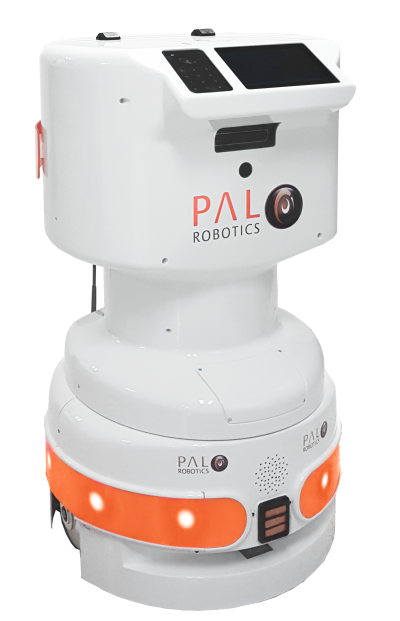Healthcare / Innovation
Hospital robotic solution aimed at relieving workload burden owing to COVID
By Andrew Sansom | 25 Jun 2020 | 0
With COVID-19 continuing to place high demands on hospitals and healthcare institutions, there is an ongoing search for better and more efficient solutions, including those that reduce time pressure on hospital staff, lessen the need for social interactions, and lower the spread of infection.
In response, PAL Robotics has developed a robotic solution for hospitals in partnership with Accerion.
The two organisations submitted a proposal to DIH Hero in response to its open call for healthcare robotics. DIH Hero is described as an independent platform that connects digital innovation hubs across Europe to create a network for those active in the healthcare robotics sector.
The prototype solution currently in development is based on PAL Robotics’ TIAGo Delivery robot, with sensors provided by Accerion. TIAGo Delivery is aimed at hospitals keen to deploy autonomous vehicles, owing to the current COVID-19 situation having increased their workloads. The solution is also aimed at hospitals with a general interest in deploying autonomous mobile robots (AMRs) to reduce the need for medical staff to carry out transportation and delivery tasks. 
In addition to solutions to reduce interactions and stop the spread of COVID-19, there is an ongoing need for delivering items around hospitals, ranging from medication to blood and medical samples, as well as food, communications and instructions, and surgical supplies. Even after COVID-19 becomes less of a risk, hospitals will still be able to use the TIAGo Delivery solution for deliveries, says PAL Robotics.
The product is described as an autonomous robot that delivers quickly and safely, owing to its configuration. It can be used with shelves for transportation or enhanced with functions such as thermal cameras or other devices for monitoring patients’ health, says the firm.
It’s also said to be accurate in its positioning thanks to Accerion’s cutting-edge sensors. The steps involved in getting the robot into hospitals include integration of the sensors on the robot, development of its navigation system, and manufacturing and set-up. According to PAL Robotics, the biggest advantage for hospitals is there is no need to change the hospital space. The solution is capable of understanding the commands of non-specially trained staff in the hospital, says the firm, and comes with an easy-to-use interface that enables users to select destinations for the robot to make deliveries or support communication.
Accerion says it provides positioning solutions that enable high-performance mobile robots and AGVs for intralogistics, with virtual lines or grid mapping to allow for free navigation. In its portfolio are the Jupiter and Triton sensor systems, which can be quickly and easily integrated into robots and other mobile platforms to make them completely autonomous, it says.
Described as Accerion’s advanced optical device, Jupiter scans the floor and creates a virtual line, navigating the mobile robot on simple or complex routes. The firm’s latest product, Triton, is said to be sufficiently versatile to display other positioning technologies, or integrate into – and enhance – existing robotic products.
Organisations involved
